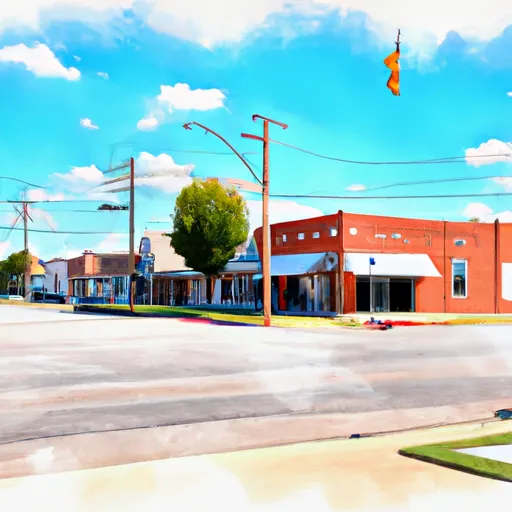-
 Snoflo Premium
Snoflo Premium
Get unlimited access to all our content
With no Ad interruptions! - Start Your Free Trial Login with existing account
Bethany
Eden Index
Climate
8.3
•
Recreation
2.8
•
Community
2.2
•
Safeguard
4.8/10

Bethany, Oklahoma has a humid subtropical climate with hot summers and mild winters. The area receives an average of 36 inches of rainfall per year, with most precipitation occurring during the spring and summer months. The hydrology constituents of Bethany are primarily composed of the North Canadian River and its tributaries. The river provides a source of water for the city as well as opportunities for fishing and boating. Outdoor recreation opportunities in Bethany include the Route 66 Park, which features walking trails, picnic areas, and a playground. Additionally, Lake Overholser and Lake Hefner offer opportunities for water sports and fishing.
What is the Eden Index?
The Snoflo Eden Index serves as a comprehensive rating system for regions, evaluating their desirability through a holistic assessment of climate health, outdoor recreation opportunities, and natural disaster risk, acknowledging the profound impact of these factors on livability and well-being.
Climate Health Indicator (CHI): 8.3
Bethany receives approximately
891mm of rain per year,
with humidity levels near 80%
and air temperatures averaging around
16°C.
Bethany has a plant hardyness factor of
7, meaning
plants and agriculture in this region tend to thrive during the non-winter months.
By considering the ideal temperature range, reliable water supplies, clean air, and stable seasonal rain or snowpacks, the Climate Health Indicator (CHI) underscores the significance of a healthy climate as the foundation for quality living.
A healthy climate is paramount for ensuring a high quality of life and livability in a region, fostering both physical well-being and environmental harmony. This can be characterized by ideal temperatures, reliable access to water supplies, clean air, and consistent seasonal rain or snowpacks.
Weather Forecast
Streamflow Conditions
Lower North Canadian
Area Rivers
Lower North Canadian
Snowpack Depths
Lower North Canadian
Reservoir Storage Capacity
Lower North Canadian
Groundwater Levels
Recreational Opportunity Index (ROI): 2.8
The Recreational Opportunity Index (ROI) recognizes the value of outdoor recreational options, such as parks, hiking trails, camping sites, and fishing spots, while acknowledging that climate plays a pivotal role in ensuring the comfort and consistency of these experiences.
Access to outdoor recreational opportunities, encompassing activities such as parks, hiking, camping, and fishing, is crucial for overall well-being, and the climate plays a pivotal role in enabling and enhancing these experiences, ensuring that individuals can engage in nature-based activities comfortably and consistently.
Camping Areas
| Campground | Campsites | Reservations | Toilets | Showers | Elevation |
|---|---|---|---|---|---|
| Guthrie Lake | None | 993 ft | |||
| Joe Benton Park - Lake Nocona | None | 852 ft | |||
| Boone Park - Lake Nocona | None | 844 ft | |||
| Liberty Lake | None | 1,025 ft | |||
| Fuqua Lake | None | 1,117 ft | |||
| Clear Creek Lake | None | 1,181 ft | |||
| Schrock Park | None | 1,305 ft | |||
| Healdton Municipal Lake | 57 | 900 ft |
Nearby Ski Areas
Catastrophe Safeguard Index (CSI):
The Catastrophe Safeguard Index (CSI) recognizes that natural disaster risk, encompassing floods, fires, hurricanes, and tornadoes, can drastically affect safety and the overall appeal of an area.
The level of natural disaster risk in a region significantly affects safety and the overall livability, with climate change amplifying these risks by potentially increasing the frequency and intensity of events like floods, fires, hurricanes, and tornadoes, thereby posing substantial challenges to community resilience and well-being.
Community Resilience Indicator (CRI): 2.2
The Community Resilience Indicator (CRI) recognizes that education, healthcare, and socioeconomics are crucial to the well-being of a region. The CRI acknowledges the profound impact of these elements on residents' overall quality of life. By evaluating educational resources, healthcare accessibility, and economic inclusivity, the index captures the essential aspects that contribute to a thriving community, fostering resident satisfaction, equity, and social cohesion.

